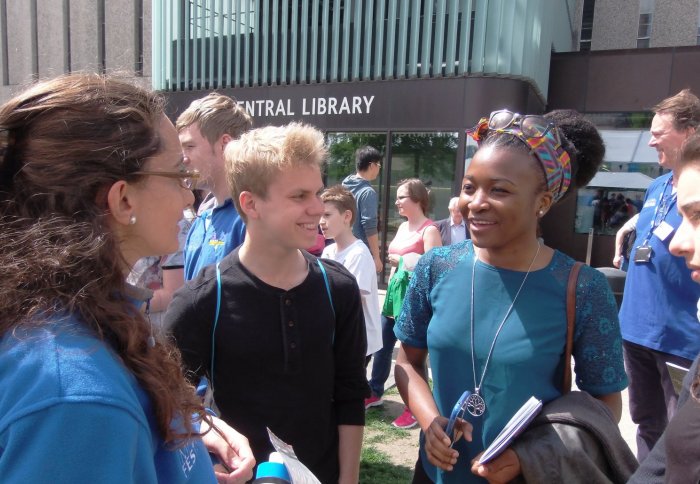

Researchers from Chemical Engineering took part in another fantastic Imperial Festival last weekend.
Researchers from Chemical Engineering had great fun demonstrating their research to members of the public at Imperial Festival last weekend. The Festival is a weekend dedicated to sharing the best science and arts on offer from Imperial. Hundreds of Imperial researchers were joined by thousands of participants who came along for the fourth, and largest Festival since it started in 2012. This hugely successful and fun event encompassed hands-on interactive exhibits for people of all ages, alongside behind-the-scenes facilities tours, music and dance performances and an entire weekend of alumni celebrations.
Some of the activities Chemical Engineering researchers were involved in included the following:
The water cycle
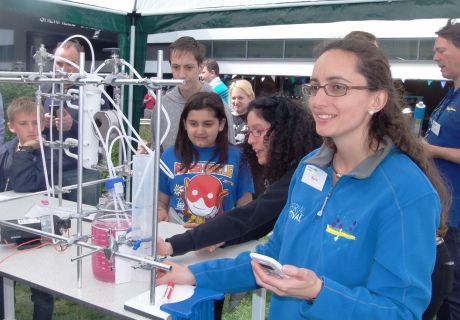
Researchers from Professor Andrew Livingston’s group were joined by researchers from Professor Kang Li and Professor Alexander Bismarck at a stand demonstrating the efficiency of membrane technology versus heat evaporation. Two energy (electricity) generating bicycles were used: one connected to a membrane unit and the other to an evaporation unit. Attendees were invited to have a go at using pedal power to see which was the most energy efficient technique.
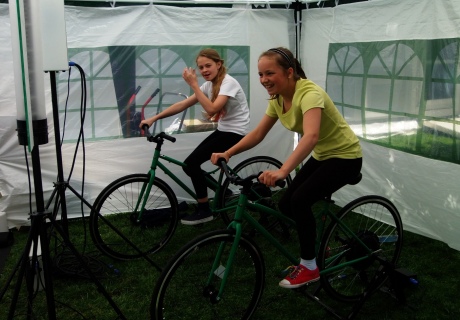
In this video Dr Patrizia Marchetti, Research Associate in the Department of Chemical Engineering introduces the concepts demonstrated at the stand.
Making and Healing Blood
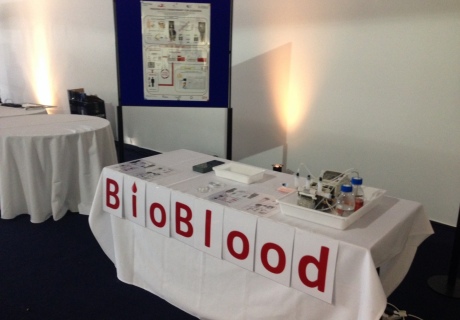
At this exhibit, members of the BioBlood Team from the Biological Systems Laboratory (BSEL) led by Professor Sakis Mantalaris, invited visitors to find out how they are producing blood in the laboratory, and explore how understanding the process of making blood is used in the treatment of people with leukaemia and other blood disorders.
This research sub-group concerns the fabrication, design, and modelling of human blood culture systems for cell therapy, disease modelling, and blood production. This includes the study of cell growth in leukemic and healthy bone marrow, umbilical cord, and peripheral blood in more natural, 3D culture systems. The healthy or cancerous (leukemic) human blood (marrow, umbilical cord, peripheral) is obtained from consenting hospital patients from London NHS hospitals.
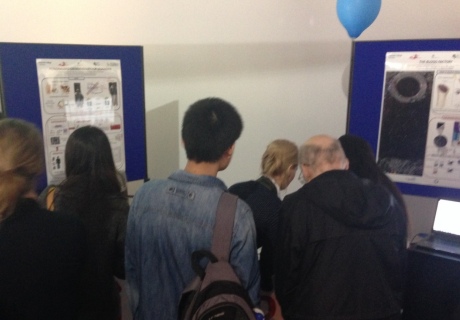
Fats and slimes
This stand was led by Shiqi Wang and Anna Sofia Tascini from Dr Rongjun Chen’s group. Anna Sofia Tascini is jointly supervised by Dr Rongjun Chen and Professors John Seddon and Fernando Bresme in the Department of Chemistry who collaborate as part of the Marie Curie SNAL (Smart Nano-objects for Alteration of Lipid bilayers) Network. The researchers invited attendees to produce colour explosions in milk using dyes and washing up liquid, and in this way discover how a 'split personality' can make fat molecules key to life.
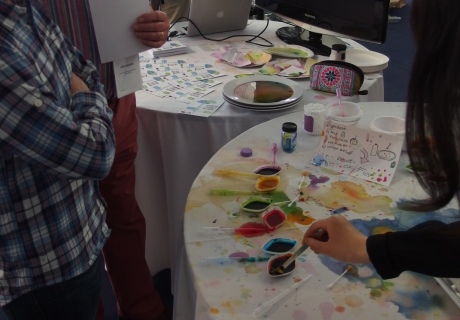
Article text (excluding photos or graphics) available under an Attribution-NonCommercial-ShareAlike Creative Commons license.
Photos and graphics subject to third party copyright used with permission or © Imperial College London.
Reporter
Michael Panagopulos
Department of Chemical Engineering

Contact details
Email: press.office@imperial.ac.uk
Show all stories by this author
Leave a comment
Your comment may be published, displaying your name as you provide it, unless you request otherwise. Your contact details will never be published.





Comments
Comments are loading...